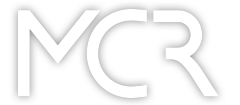Upgrading Duquesne Light Company’s low income energy efficiency program tracking system
“MCR’s upgrade to the low income EE tracking system was delivered on time and on budget to significantly improve our staff and implementer efficiency, enhance our reporting capabilities, and modernize our cross-platform data exchanges.”
—Dave Defide, Senior Manager of Customer Programs
Background
Duquesne Light Company built its original low income energy efficiency (EE) tracking system decades ago in response to mandates for a Low Income Usage Reduction Program (LIURP) or “Universal Services” programs. Although the low income EE program was but one initiative in a portfolio of Universal Services programs to support income-eligible customers, the system was built primarily to track the low income EE program. Over time, changes to low income program mandates, designs, and delivery mechanisms caused the purpose-built system to no longer align optimally with the low income EE program compliance requirements, internal management needs, or the implementation process in the field. Furthermore, evolutions in information technology (IT), in particular database systems and interfaces between the low income EE tracking system and the core customer information system, left the current system approaching obsolescence and facing the end-date for underlying software and system support.
Solution
MCR applied our well-defined, structured approach to EE system planning to design a new system; then our utility-specific system development team developed the new system. Deploying the upgraded system without disrupting current implementation contractor scopes of work required replicating those parts of the existing system’s functionality that were still relevant, while bringing the look, feel, and self-service maintenance capabilities of modern systems to bear. A deep dive into compliance and other reporting and management analytic needs allowed the new system to align tightly with them, and to be capable of expansion to track and report one or more of the other Universal Services programs since their compliance, reporting, and internal management analytics needs are similar to those for the low income EE program.
Results
The system was completed in time for Duquesne Light to use it to support of the start of a new EE program year. Duquesne’s third-party implementation contractors were able to easily transition to the new system because it was designed to fit their processes and was similar to the systems they had been using. Duquesne management and staff now have a state of the art system featuring application programming interfaces to supporting systems and a variety of self-service maintenance capabilities. In addition, the system tightly aligns with program compliance requirements and fulfills Duquesne’s reporting needs, including those for management, analytical reporting, and evaluation, measurement, and verification (EM&V) purposes. Going forward, Duquesne will be able to easily expand the system to support additional Universal Services programs.
